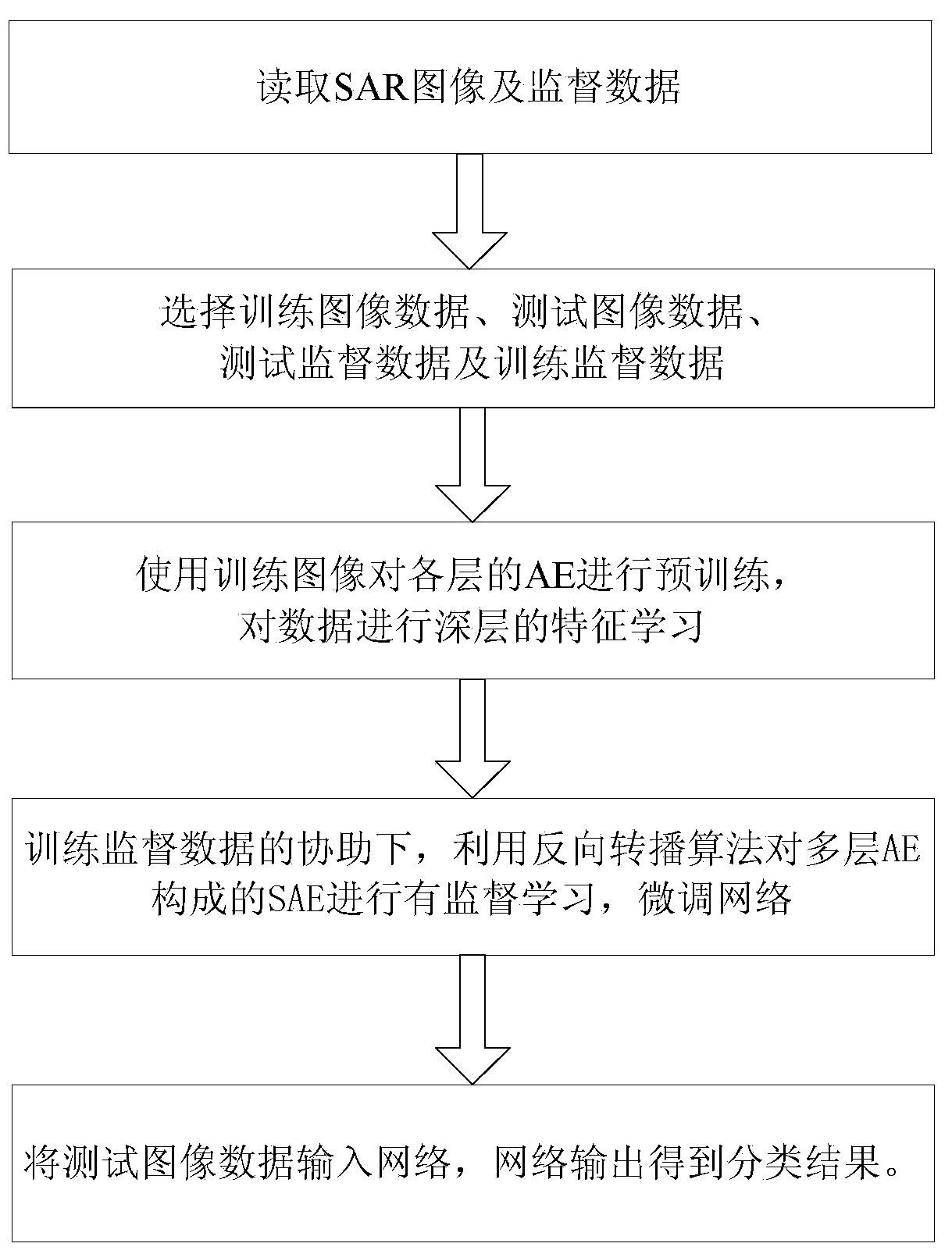Synthetic aperture radar image classifying method based on stacked automatic coding machines
A synthetic aperture radar, automatic encoder technology, applied in computer parts, instruments, character and pattern recognition, etc., can solve the problems of nonlinear characteristics, low classification accuracy, noise pollution of SAR image data, etc.
- Summary
- Abstract
- Description
- Claims
- Application Information
AI Technical Summary
Problems solved by technology
Method used
Image
Examples
specific Embodiment approach 1
[0024] Specific implementation mode one: the following combination figure 1 Describe this embodiment, the synthetic aperture radar image classification method based on stacked autoencoder described in this embodiment, it comprises the following steps:
[0025] Step 1: Collect N pieces of original SAR images for data preparation, and obtain SAR image data and SAR supervision data;
[0026] Step 2: Obtain training image data and test image data from SAR image data; obtain training supervision data and test supervision data from SAR supervision data;
[0027] Step 3: Use the training image data to pre-train the autoencoder at each layer of the network based on the stacked autoencoder, learn data features and extract features; on the basis of pre-training, use the training supervision data to Perform supervised learning on the resulting network, fine-tune the network, and obtain a trained network based on a stacked autoencoder;
[0028] Step 4: Input the test image data into the...
specific Embodiment approach 2
[0030] Specific implementation mode two: this implementation mode further explains implementation mode one, and the specific method for obtaining SAR image data and SAR supervision data in step one is:
[0031] Set the size of each original SAR image as M×M, read each original SAR image, and convert each original SAR image into M 2 The row vector of N; N original SAR images are traversed to obtain SAR image data, which is N×M 2 The matrix; Determine the corresponding image category label by the original SAR image, as the SAR supervision data, it is a vector of N × 1, the i-th element marks the category label of the i-th original SAR image in the vector, i=1, 2, 3, ... N.
specific Embodiment approach 3
[0032] Specific embodiment three: this embodiment further explains embodiment two, obtain training image data and test image data by SAR image data in step two; Obtain the specific method of training supervision data and test supervision data by SAR supervision data as follows:
[0033] For the SAR image data, starting from the first row, the row vectors are extracted from top to bottom to form training image data; starting from the second row, the row vectors are extracted from top to bottom to form test image data;
[0034] For SAR supervised data, starting from the first row, row vectors are extracted from top to bottom to form training supervision data; starting from the second row, row vectors are extracted from top to bottom to form test supervision data.
PUM
 Login to View More
Login to View More Abstract
Description
Claims
Application Information
 Login to View More
Login to View More - R&D
- Intellectual Property
- Life Sciences
- Materials
- Tech Scout
- Unparalleled Data Quality
- Higher Quality Content
- 60% Fewer Hallucinations
Browse by: Latest US Patents, China's latest patents, Technical Efficacy Thesaurus, Application Domain, Technology Topic, Popular Technical Reports.
© 2025 PatSnap. All rights reserved.Legal|Privacy policy|Modern Slavery Act Transparency Statement|Sitemap|About US| Contact US: help@patsnap.com

